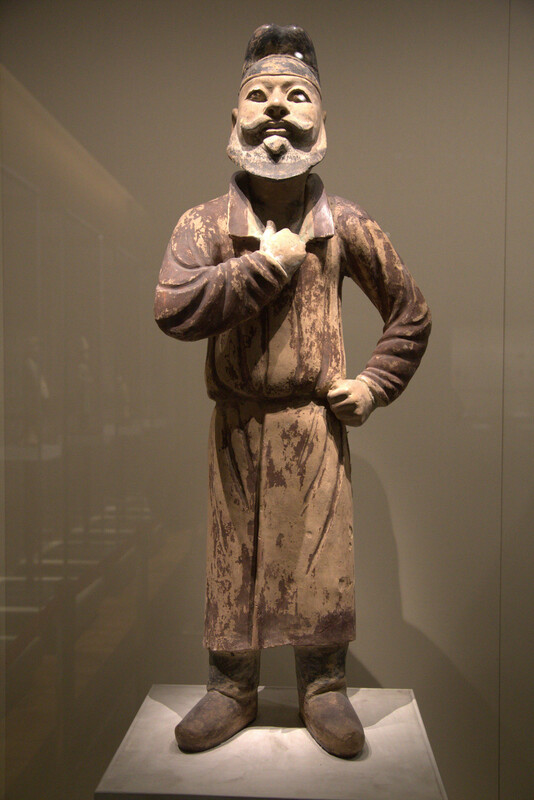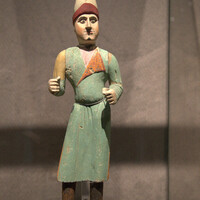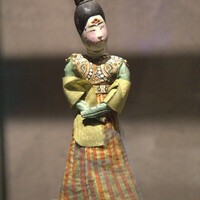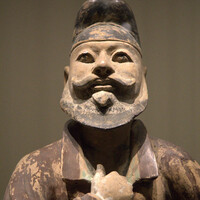Astana cemetery figurines
Type:
Cemeteries,
Ceramics,
Grave goods,
Sculptures,
Textiles
Date:
Seventh century
Location or Findspot (Modern-Day Country):
China
Medium:
Earthenware
Description:
The painted clay figure of a Sogdian camel keeper (56 cm high) dates to the seventh century. It was found in a tomb (no. 206) in the Astana cemetery near Gaocheng (or Kocho) in the Turpan oasis, now in Xinjiang Province, China. The tomb was opened to receive the bodies of a dead man, Zhang Xiong, in 633 and his widow, Lady Qu, in 689; in the years between their deaths, the Gaocheng Kingdom was conquered by the Chinese Tang dynasty. The camel-keeper figurine may have been made in the Tang capital, Chang'an (now Xi'an), but it does not look Chinese (note the large nose, mustache, and beard) and is dressed in non-Chinese clothing, including a tall white hat. It therefore represents one of the Sogdians active as traders in northwestern China in the early Middle Ages. His hands originally held a rope to which a camel figurine was attached.
The female dancer from the same tomb (31 cm) is wearing Sogdian and other silk textiles. The pearl-edged roundels on her bodice resemble those on Sasanian and Central Asian garments. A similar dancer from the same tomb had arms made of paper that proved to be pawnshop tickets from Chang'an.
A painted clay groom figure found in an eighth-century Astana tomb (no. 216) is much taller (110 cm). His facial features and clothing are stereotypically Sogdian; these are not portraits of actual people but, rather, generic images of Central Asian foreigners. These figurines were intended to be servants of the deceased in the afterlife.
The female dancer from the same tomb (31 cm) is wearing Sogdian and other silk textiles. The pearl-edged roundels on her bodice resemble those on Sasanian and Central Asian garments. A similar dancer from the same tomb had arms made of paper that proved to be pawnshop tickets from Chang'an.
A painted clay groom figure found in an eighth-century Astana tomb (no. 216) is much taller (110 cm). His facial features and clothing are stereotypically Sogdian; these are not portraits of actual people but, rather, generic images of Central Asian foreigners. These figurines were intended to be servants of the deceased in the afterlife.
Relevant Textbook Chapter(s):
4
Repository and Online Resources:
• Listen to a lecture by Dr. Judith Lerner about Sogdian traders on the Silk Routes.
Image Credits:
Linda Safran





